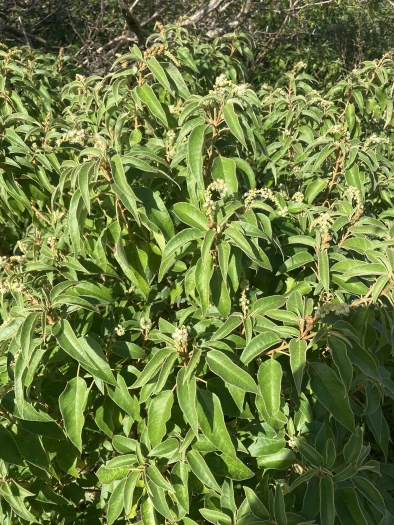Yellow Croton
(Croton flavens)
Yellow Croton (Croton flavens)
/
/

monkeyjodey
Public Domain
Image By:
monkeyjodey
Recorded By:
Copyright:
Public Domain
Copyright Notice:
Photo by: monkeyjodey | License Type: Public Domain | License URL: http://creativecommons.org/publicdomain/zero/1.0/ | Rights Holder: monkeyjodey | Publisher: iNaturalist | Date Created: 2023-01-26T13:49:31Z |
























Estimated Native Range
Climate Requirements for Twin Falls, Idaho
| This Plant | Your Site | Plant Suitability for Your Location | ||
|---|---|---|---|---|
| • Precipitation | 16" - 142" | 10" | Your precipitation may be insufficient for this plant. Irrigate N" / year. | Irrigate N" / year |
| • High Temp. | 80°F - 103°F | 89°F | Your summer temperatures are normal for this plant. | Excellent |
| • Low Temp. | 16°F - 76°F | 20°F | Your winter temperatures are normal for this plant | Excellent |
This plant should grow well at your location with about N inches per year (Y minutes per month) of irrigation.
Summary
Croton flavens, commonly known as Yellow Croton, is a perennial shrub native to the Caribbean and the northern part of South America, specifically thriving in coastal regions, dry forests, and disturbed areas. It typically grows at a moderate rate to a height of 2.5-3 feet (0.8-0.9 meters) and a width of 2-2.5 feet (0.6-0.8 meters). The plant features narrow, leathery leaves and bears yellow, somewhat inconspicuous flowers in the spring and summer, which are followed by small, inedible fruits. While the flowers are not particularly showy, the foliage can add a textural contrast to gardens.
Yellow Croton is valued for its drought tolerance and ability to thrive in poor, sandy soils, making it suitable for xeriscaping and coastal landscaping. It is often used in rock gardens, as a border plant, or in mass plantings for erosion control. This species requires full sun to part shade and prefers well-drained sandy or loamy soils. It is generally low-maintenance but should be monitored for potential invasiveness outside its native range. In some regions, it has become a problematic invasive species due to its ability to outcompete native vegetation.CC BY-SA 4.0
Yellow Croton is valued for its drought tolerance and ability to thrive in poor, sandy soils, making it suitable for xeriscaping and coastal landscaping. It is often used in rock gardens, as a border plant, or in mass plantings for erosion control. This species requires full sun to part shade and prefers well-drained sandy or loamy soils. It is generally low-maintenance but should be monitored for potential invasiveness outside its native range. In some regions, it has become a problematic invasive species due to its ability to outcompete native vegetation.CC BY-SA 4.0
Plant Description
- Plant Type: Shrub, Tree
- Height: 2.5-3 feet
- Width: 2-2.5 feet
- Growth Rate: Moderate
- Flower Color: Yellow
- Flowering Season: Spring, Summer
- Leaf Retention: Evergreen
Growth Requirements
- Sun: Full Sun, Part Shade
- Water: Low
- Drainage: Fast
Common Uses
Drought Tolerant, Low Maintenance
Natural Habitat
Coastal regions, dry forests, and disturbed areas in the Caribbean and northern South America
Other Names
Common Names: Yellow Croton, Copaiba, Rock-Sage, Yellow Balsam, Hoggabush, Banaba, Marrow, Moron
Scientific Names: Croton flavens, Croton albidus, Croton althaeifolius, Croton astroites, Croton balsamifer, Croton cascarilla, Croton flavens f. richardii, Croton flavens var. balsamifer, Croton flavens var. balsamifera
GBIF Accepted Name: Croton flavens